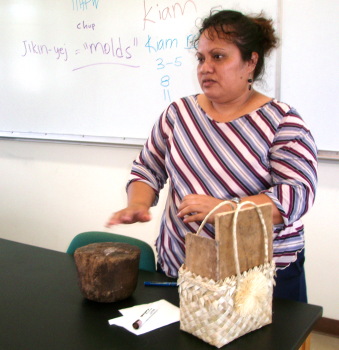
Lerihna explains the Mwoakillese usage of jikin-yej (mold)
Dondy of Pohnpei introduced the class to the Pohnpeian kiam. Marvin explained the difference between a kiam and a kiam me ro which Marvin refered to as a kiam ro. Bradmurray, also from Pohnpei, explained the use of hibiscus trunk split in two as tongs for handling uhm rocks and food in the uhm. Lerihna, from Mwoakilloa, then covered the making of woven articles using shaping molds.

Lerihna explains the Mwoakillese usage of jikin-yej (mold)
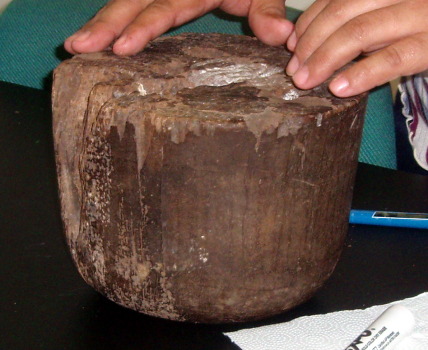
jikin-yej mold
Toshimichy from Chuuk then explained a system of reading omens, foretelling, for example, the likelihood of a good catch. A single palm frond leaflet is knotted repeatedly down the length of the palm frond. This is called a pwee. When no more knots can be tied, then the frond can be read. The knowledge needed to read the frond is secret. One might compare this conceptually at some level to pulling petals off a flower to make a decision. The frondlet is chosen by a family member other than the reader.
Megan from Mwoakilloa spoke about a rohp, "mehngin ewij." Melainy of Nett, Pohnpei, presented a coconut leaf rachis broom, kepen oahk en Pohnpei. AJ from Kitti, Pohnpei, brought in a padil paddle.
Kimberley, from Woleai, shows the class a teoriu. The teoriu appears similar to a gulfoy previously shown by Bloomy from Ulithi, but Kim from Woleai refers to hers as a teoriu or téoriu. Ulithian and Woleian are distinct languages.
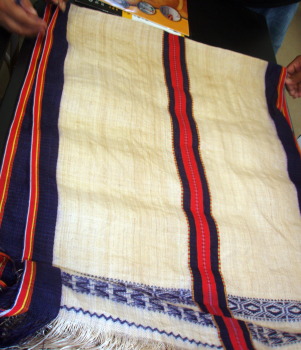
téoriu
These are woven of local banana fiber. The bright colors are the result of modern dyes. These take a lot of time and have special ceremonial value.
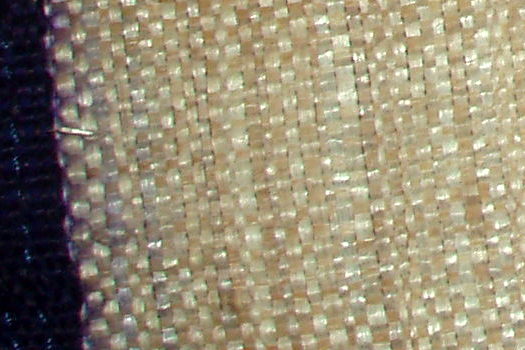
téoriu
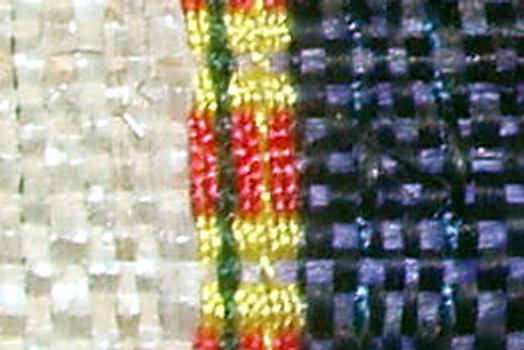
téoriu
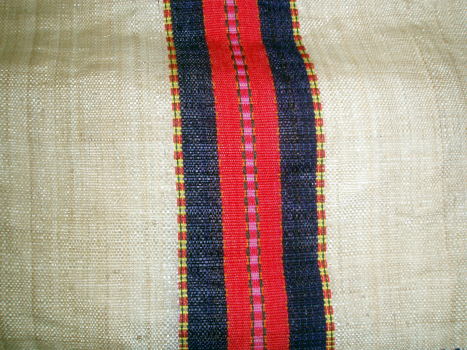
téoriu
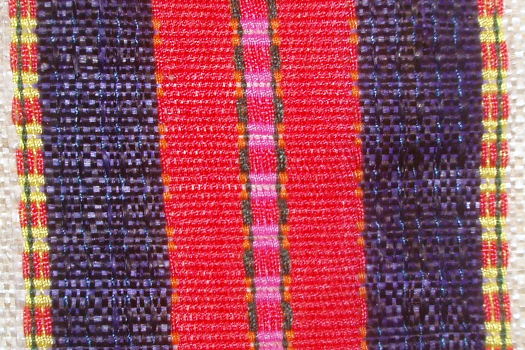
téoriu midstripe
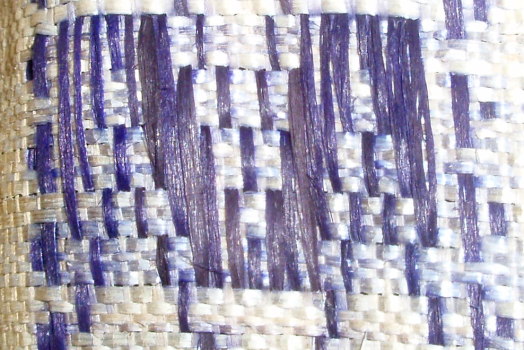
téoriu
Caren displayed a finely woven kieki pandanus mat.
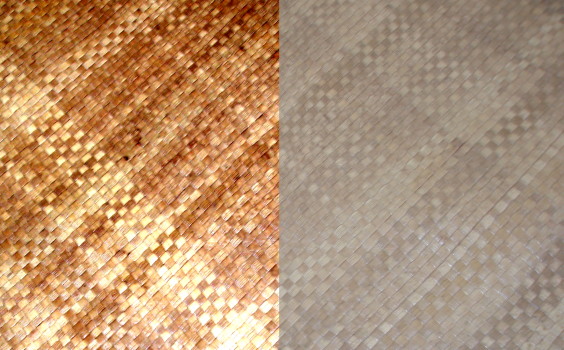
Kieki from Chuuk
Terina from Chuuk showed the class a local fan, saipe. Charityn showed the class a Chuukese love stick. Paula of Chuuk shared a mwaramwar.
Many items of traditional culture have either fallen into disuse or become curios and trinkets for tourists. Plastic products from distant continents has displace many traditional material cultural items. Augusta brought in a baby basket that is still being used by a baby.
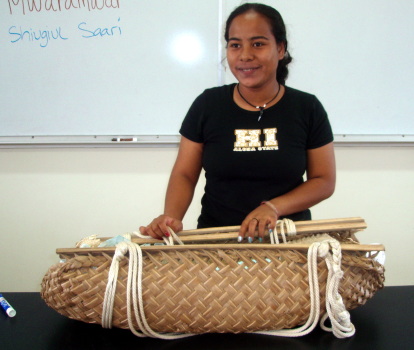
Augusta shiugiul saari
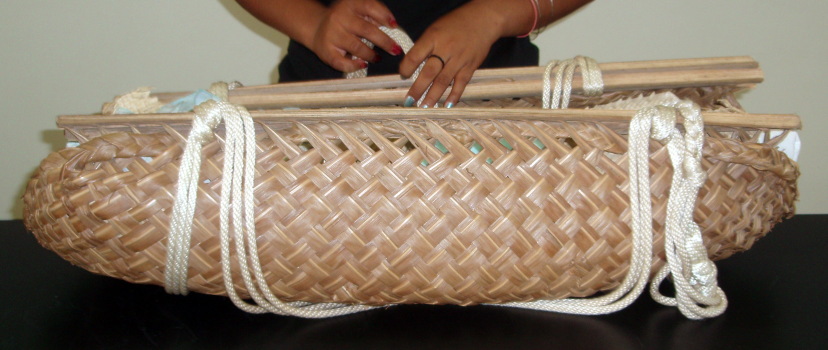
Shiugiul saari
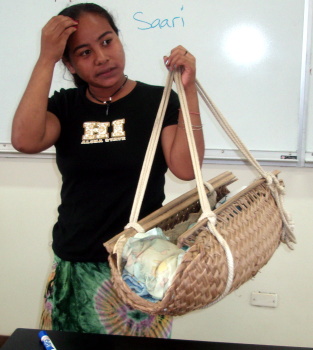
Shiugiul saari
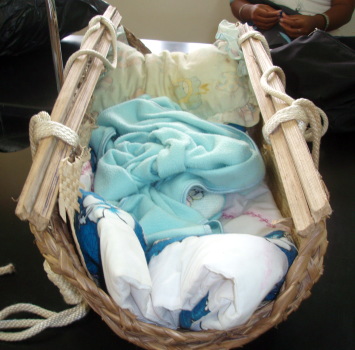
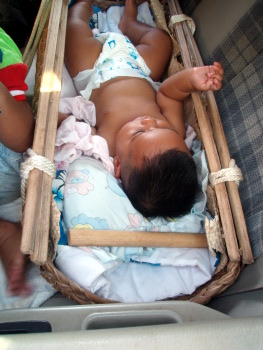
Shiugiul saari in active use, with an additional wood dowel to help hold the top open
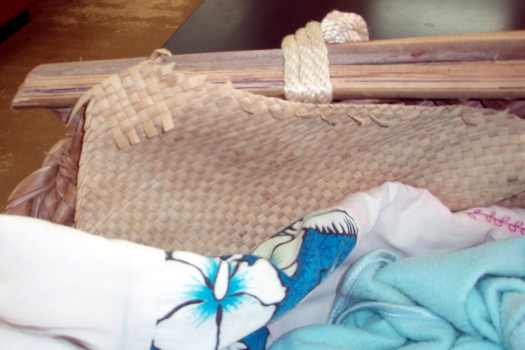
Shiugiul saari liner
Resel presented the ngarangar.
Aquila brought in a stylistic adaptation of the traditional Pohnpeian koal. The koal was used by her aunt in her wedding ceremony. Not a Pek pwoapwoaud nan tehnpas traditional marriage request as I mistakenly first thought, but apparently a full church ceremony wedding.
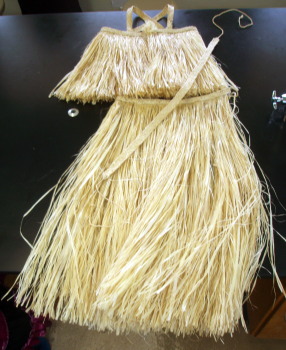
Traditional wedding attire
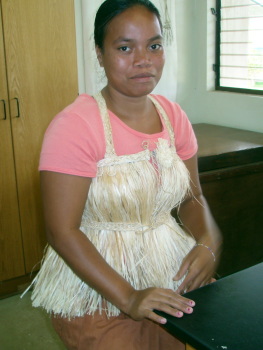
Aquila models the traditional wedding attire top piece
Lymer presented a mwaramwar. Areline also brought a ngarangar.
Ojones brought an inipal - a strainer from the fiber at the base of a new coconut leaf. In Kosrae this is called an inpucl. In southern Chuuk this is a mor-ormor. Faichuuk refers to it as a umwumw. In Woleai it is a gatiuyealig.
Samuel brought an item not before seen in class nor likely to be seen again. The small wooden figure is a navigator's mascot. This special figure, called a gohse, would travel with a navigator throughout their life. The figure would bring good fortune to the navigator. The figure would remain with the family when the navigator passed away. In this modern age, an outer island Yapese navigator passed away on Pohnpei, his figurine remained in the home where he had last lived.
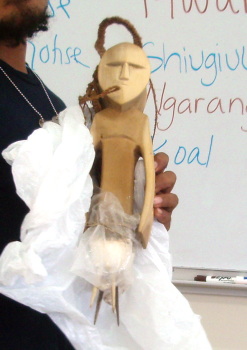
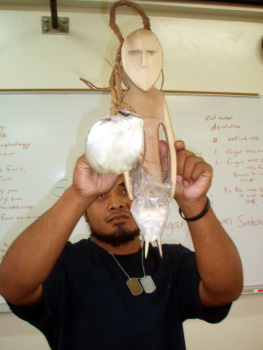
Navigator mascot
The tail is made of stingray barbs. Given that people die every year from stingray stings, collecting these suggests both risk and courage.
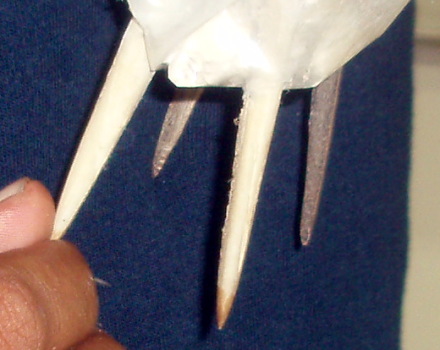
mascot stingray tail
Ioichy presented leg and arm decorations called a meh.